What the Data Says: The Most Effective Referral Incentives in 2026
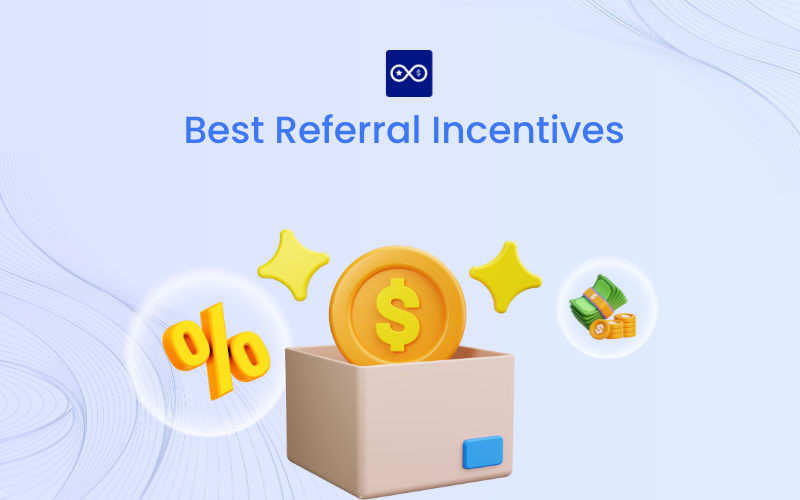
Referral incentives (or referral rewards) are the specific rewards—cash, discounts, store credit, or perks—that motivate customers to recommend your brand to friends and family, turning word-of-mouth into measurable revenue growth. The right incentive structure can cut your customer acquisition costs in half while building a base of loyal advocates who keep coming back.
Most Shopify merchants struggle to choose between cash payouts, percentage discounts, tiered bonuses, or non-monetary rewards without clear data on what actually drives results. This guide breaks down referral conversion rates, fraud risks, and profitability calculations across different incentive types so you can launch a referral program that delivers ROI from day one.
Data Proves Referral Incentives Beat Rising CAC
Over 78% of successful brands now use double-sided referral programs that reward both the referrer and the new customer. This approach outperforms single-sided programs by significant margins because it feels less like a sales pitch and more like a genuine favor between friends. When both people win, the awkwardness of asking disappears.
Meanwhile, paid customer acquisition costs have climbed steadily since 2023. Facebook and Google ads now cost 40-60% more per conversion than they did three years ago, while referral acquisition costs have stayed flat or even dropped. The gap keeps widening as privacy changes make paid ads harder to track and optimize.
Paid CAC Trends Versus Referral CAC
The average cost to acquire a customer through paid ads sits between $45-$80 for most Shopify stores right now. Referral programs typically cost $15-$30 per acquisition when you factor in reward payouts and program management. That’s less than half the cost for customers who often stick around longer and spend more.
Privacy changes from iOS 14+ and cookie deprecation hit paid channels harder than referral traffic. Ad platforms lost their tracking precision, making campaigns tougher to optimize. Referral links work independently of third-party cookies since they rely on direct sharing behavior and first-party data.
Participation Rate Averages Across Industries
Fashion and beauty brands see referral participation rates between 8-15% of customers, driven by products people naturally want to share on social media. B2B software companies typically see lower participation at 3-7%, though their referrals convert at higher rates because of longer consideration cycles and stronger peer influence.
- Home goods: 5-10% participation with strong conversion during seasonal shopping periods
- Health and wellness: 10-18% participation, particularly high for subscription products with recurring benefits
- Electronics: 4-8% participation but higher order values make each referral more profitable
Top Performing Incentive Types by Conversion Rate
The most effective incentive depends on your product category, average order value, and what motivates your customers. Cash rewards convert best for high-ticket items above $200, while store credit and discounts perform better for everyday purchases under $100. Non-monetary rewards like early access can outperform cash when they align with your brand identity and customer values.
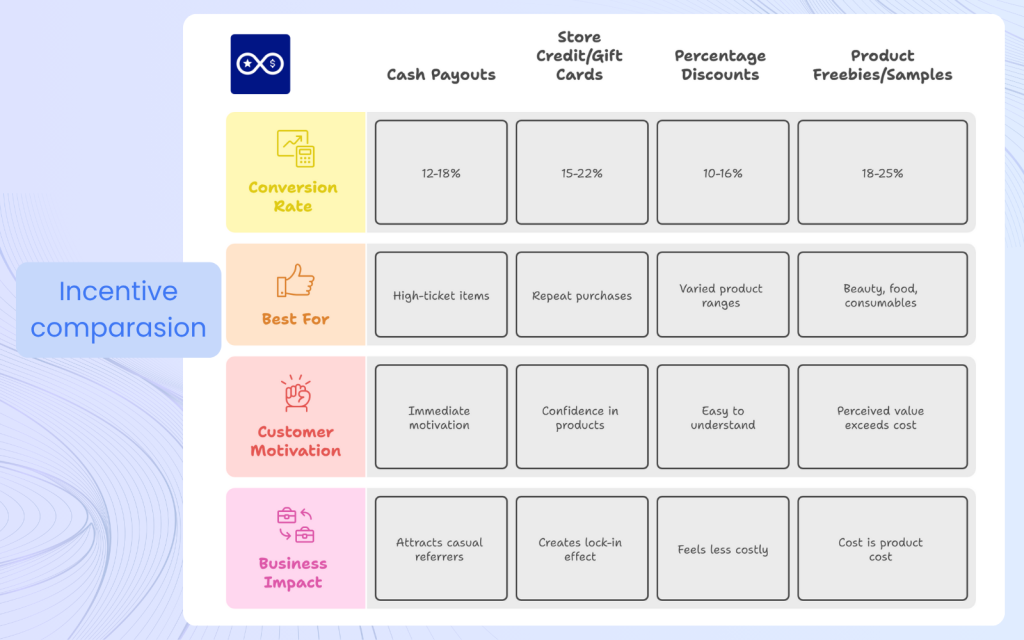
Cash Payouts
Direct monetary rewards through PayPal, Venmo, or bank transfer create immediate motivation. Programs offering $20-$50 cash per successful referral see conversion rates of 12-18% among referred friends. The actual dollar amount matters less than how generous it feels relative to your product price.
Cash works best for purchases above $150 where the payout feels substantial enough to justify sharing. This type also attracts more casual referrers who aren’t deeply loyal to your brand but appreciate the straightforward transaction.
Store Credit or Gift Cards
Store credit drives repeat purchases while feeling generous to recipients. Customers who receive store credit show 25-40% higher lifetime value compared to those who get cash rewards. This incentive converts referred friends at rates of 15-22% because it signals confidence in your products.
The psychology here is powerful. When someone receives $25 in store credit, they typically spend $60-$80 on their next order, turning the reward into additional revenue. Store credit also creates a natural lock-in effect where customers return to your store rather than spending elsewhere.
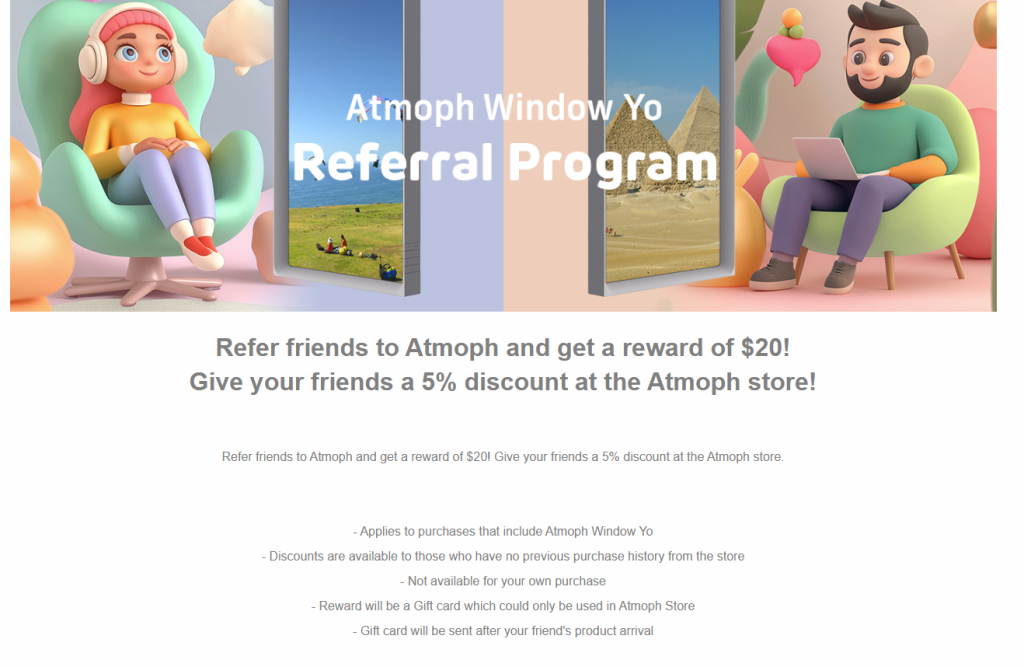
Percentage Discounts
Percentage-based rewards like “Give 20%, Get 20%” are easy to understand and promote across all price points. These programs see friend conversion rates of 10-16%, slightly lower than fixed-dollar rewards but with the advantage of scaling automatically with purchase size. A customer buying a $50 item and another buying a $200 item both feel fairly rewarded.
Discounts feel less costly to your business than cash while maintaining strong perceived value. The flexibility makes them ideal for brands with varied product ranges from low to high price points.
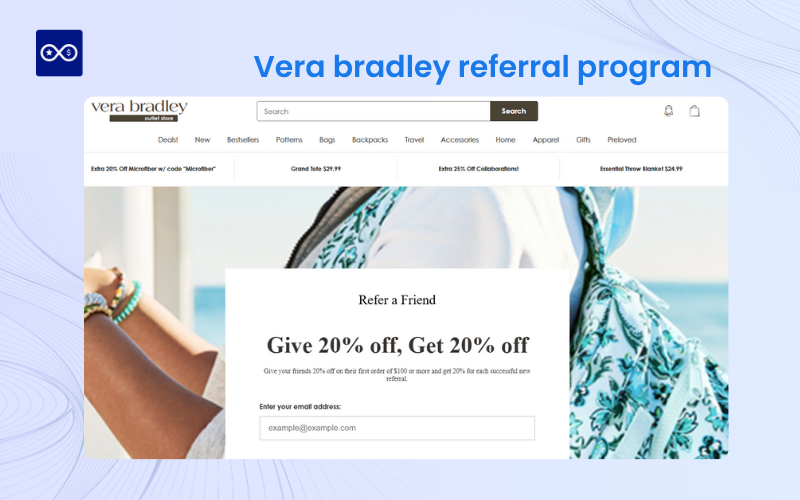
Product Freebies or Samples
Offering free products costs your business only the product cost and shipping, not the full retail value. Beauty, food, and consumable goods brands see exceptional results with this approach, achieving 18-25% conversion rates when the free product is desirable and relevant.
The perceived value often exceeds the actual cost. A free skincare sample that costs you $3 to fulfill might have a $20 retail value in the customer’s mind, creating outsized motivation to refer.
How to Calculate Breakeven Reward Value
Setting profitable reward amounts starts with understanding your unit economics. You’ll want to know your average order value (AOV), gross margin, and customer lifetime value (CLV). The goal is offering rewards generous enough to motivate sharing while keeping acquisition costs below the profit you’ll generate from new customers.
Margin Threshold Formula
First, calculate your gross margin per order. If your AOV is $80 and your cost of goods sold is $32, your gross margin is $48 or 60%. Customer lifetime value represents the total profit you expect from a customer over their entire relationship with your brand, typically calculated as (AOV × purchase frequency × customer lifespan) – (cost of goods × total orders).
Your maximum total reward payout for both referrer and friend shouldn’t exceed 40% of the gross margin on the first purchase. With a $48 margin, you’d cap total rewards at around $19, perhaps structured as $10 for the referrer and $9 for the friend.
Example Calculation for $80 AOV
Let’s walk through a specific scenario. Your store has an $80 AOV, $32 cost of goods (40% cost ratio), and customers typically make 2.5 purchases over their lifetime. Your gross profit per customer is ($80 – $32) × 2.5 = $120 lifetime value.
If you offer $10 store credit to the referrer and $10 off to the friend, your total reward cost is $20. The friend’s discount reduces their first order margin from $48 to $38. Your total acquisition cost including the referrer reward is $20, giving you $38 profit on the first order and $100 total lifetime profit—a healthy 5:1 return.
Double Sided Vs Single Sided Rewards Performance
Double-sided programs that reward both parties consistently outperform single-sided approaches across nearly every metric. Data from over 2,000 Shopify merchants shows double-sided programs generate 2.3x more referral shares and 1.8x higher conversion rates than single-sided alternatives. Single-sided programs can work when budget constraints are tight or when your product naturally generates enthusiastic word-of-mouth.
Share Rate Impact
When you reward only the referrer, about 5-8% of customers will share their referral link at least once. Add a reward for the friend, and that number jumps to 12-18%. The reason is simple: people hesitate to share offers that only benefit themselves since it feels self-serving.
A double-sided structure transforms the referral into a genuine gift. The referrer feels comfortable sharing widely because their friend also benefits from the recommendation.
Conversion Rate Impact
Friends who receive a reward for trying your brand convert at 15-22% rates. Friends who receive nothing convert at only 8-12% even when their friend is rewarded. The discount or credit removes the financial risk of trying an unfamiliar brand.
The biggest conversion lift occurs when the friend’s reward is at least 15-20% of your AOV. Smaller friend rewards under 10% of AOV show diminishing returns because the savings don’t feel substantial enough to influence behavior.
Customer Lifetime Value Uplift
Both the referrer and the referred friend show 30-45% higher lifetime value compared to customers acquired through paid ads. The referral process pre-qualifies customers who are likely to love your products based on their friend’s recommendation. Referrers become even more loyal after successfully bringing friends into the brand, with repeat purchase rates 25% higher than non-referring customers.
Tiered And Milestone Bonuses Impact On Repeat Purchase
Tiered reward structures that increase benefits as customers hit referral milestones can boost total referrals per participant by 40-60% compared to flat reward programs. The gamification element taps into achievement motivation, where customers feel compelled to reach the next tier once they’ve started. However, overly complex tiers confuse participants and reduce engagement rather than enhancing it.
Tier Levels That Motivate
Your first tier needs to be achievable quickly, ideally after just one or two successful referrals. The psychological win of reaching that first milestone encourages continued participation far more than distant, difficult-to-reach goals.
- Bronze tier: First successful referral unlocks $10 bonus credit and recognition
- Silver tier: Three successful referrals earn $30 total credit plus early access to new products
- Gold tier: Five successful referrals unlock $60 credit, free shipping for a year, and VIP customer service
Milestone Timing Best Practices
Space your milestones to maintain engagement without overwhelming participants, typically at 1, 3, 5, and 10 successful referrals for most Shopify stores. The gaps between tiers create natural pause points where customers can celebrate achievements without feeling pressured to immediately chase the next level.
Celebrate each milestone with enthusiastic email notifications and social recognition. Feature top referrers on your website or Instagram stories to satisfy the social validation needs that often motivate referral behavior as much as tangible rewards.
Non-Monetary Rewards That Drive Shares Without Margin Pain
Alternative incentives that cost little but provide high perceived value can outperform cash rewards when they align with customer motivations. Early access to new products, exclusive community membership, or charitable donations create emotional connections that purely transactional rewards can’t match. Mission-driven brands or products with strong community elements see particularly strong results with non-monetary approaches.
Early Access And Exclusives
VIP treatment like first access to new product launches or limited-edition items appeals strongly to status-conscious customers. Programs offering exclusive access see 8-14% participation rates, comparable to modest cash rewards, while costing the business virtually nothing beyond operational setup.
The scarcity and exclusivity create urgency that purely monetary rewards can’t replicate. Your most engaged customers often prefer experiential rewards over cash since they strengthen their identity as brand insiders.
Cause-Based Donations
Charitable giving resonates powerfully with socially conscious consumers. Programs that donate $5-$10 per referral to chosen causes see 6-11% participation rates. The business donates on the customer’s behalf, creating a feel-good motivation that aligns referral activity with personal values.
This approach works best when you partner with causes that authentically connect to your brand mission and customer base. An outdoor gear company supporting environmental conservation makes sense, while a random charity partnership feels forced.
Social Recognition Perks
Public acknowledgment through features on your website, social media shoutouts, or exclusive badges satisfies social validation needs. While recognition alone rarely drives referrals, combining it with other rewards can boost participation by 15-20%. Feature your top monthly referrers in email newsletters or create a leaderboard that celebrates their contributions.
Referral Fraud Risk Versus Reward Size
Higher reward values naturally attract more fraud attempts. Programs offering rewards above $50 see 3-5x more fraudulent activity than those under $25. Common patterns include self-referrals using fake email addresses, bulk fake account creation to harvest rewards, and organized fraud rings that systematically exploit programs.
Common Fraud Patterns
Self-referrals where customers create fake accounts to claim rewards themselves represent 40-60% of referral fraud. You’ll notice patterns like multiple referrals from the same IP address, similar email domains, or referred “friends” who never engage beyond claiming their reward.
Bulk account creation by bad actors who use automated tools to generate hundreds of fake referrals is less common but more damaging. Attacks typically happen within hours of launch or during promotional periods when monitoring might be less vigilant.
Fraud Prevention Tactics
Email verification requirements and purchase thresholds eliminate most casual fraud attempts. Setting the threshold at 50-75% of your AOV ensures referred customers are genuine buyers while keeping the barrier low enough not to discourage legitimate referrals.
- Monitor for suspicious patterns: Same IP addresses, rapid-fire referrals, or referred customers who never make second purchases
- Require email verification: Simple step that blocks automated bot activity
- Set purchase minimums: Rewards only pay out after the referred friend spends a qualifying amount
Platforms like Bloop include built-in fraud detection that automatically flags suspicious activity, protecting your program integrity without manual review.
KPI Benchmarks For Shopify Stores
Tracking the right metrics helps you understand whether your referral program delivers meaningful ROI or needs optimization. The three core KPIs—share rate, friend conversion rate, and revenue per referral—tell you how many customers are participating, how effectively their shares convert to sales, and what financial impact the program generates.
Share Rate
Share rate measures the percentage of customers who share their referral link at least once. Strong programs achieve 10-15% participation, while exceptional ones reach 20%+. Low share rates under 5% typically indicate weak incentives, poor program visibility, or friction in the sharing process.
You can boost share rate by prominently featuring the program in post-purchase emails, adding share buttons to order confirmation pages, and testing different reward amounts.
Friend Conversion Rate
Friend conversion rate tracks how many people who click a referral link actually complete a purchase. Healthy programs see 12-18% conversion, with top performers hitting 20-25%. The friend’s reward size heavily influences conversion, along with your product-market fit and how well the referrer’s recommendation resonates.
Lower conversion rates might mean your friend reward is too small, your products don’t match the referred audience’s needs, or trust in the referrer’s recommendation isn’t translating to purchase intent.
Average Revenue Per Referral
Average revenue per referral divides total revenue from referred customers by the number of referral shares sent. Strong programs generate $15-$40 per referral share depending on AOV and conversion rates, though this varies widely by industry.
This metric helps you calculate program ROI by comparing revenue per referral against your total reward costs and program expenses. If you’re spending $20 in rewards per successful referral but generating $120 in lifetime value, you’re looking at a healthy 6:1 return.
Three Step Launch Checklist For Shopify
Getting your referral program live doesn’t require complex technical setup or weeks of development time. The key is starting simple with a clear reward structure, easy sharing tools, and automated tracking that removes manual work. Most merchants can launch a fully functional program in under an hour.
Step 1: Set Rewards In Bloop Dashboard
Choose your reward type and amount based on your margin calculations. Start with double-sided rewards that give both referrer and friend meaningful incentives. Configure whether you’re offering store credit, percentage discounts, or fixed-dollar amounts, and set any purchase thresholds that referred friends must meet before rewards pay out.
Test your reward structure with a small group first if you’re uncertain about the amounts. Most successful programs start with rewards equal to 15-25% of AOV for both parties, then adjust based on performance data.

Step 2: Embed One Click Sharing Widgets
Add referral share buttons to high-visibility pages like order confirmation, account dashboard, and email receipts. Customize the messaging to match your brand voice, making the ask feel natural rather than pushy. One-click sharing to email, SMS, Facebook, and Twitter removes friction and makes it easy for customers to share in their preferred channel.
>> See more: Top 7 Referral Widgets for Shopify That Actually Drive Conversions
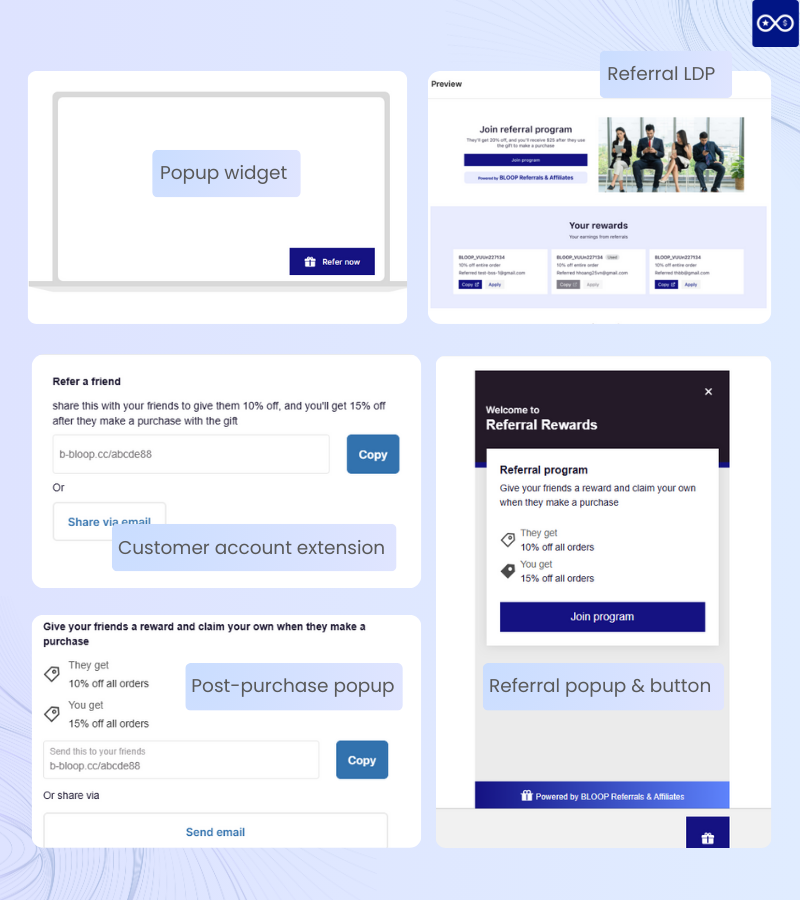
Step 3: Automate Tracking And Payouts
Set up automatic reward fulfillment that applies credits or discounts without requiring manual review. Configure email notifications that alert referrers when friends make purchases and when rewards are ready to use. Automated tracking ensures every referral is properly attributed even when customers switch devices or take days to complete purchases.
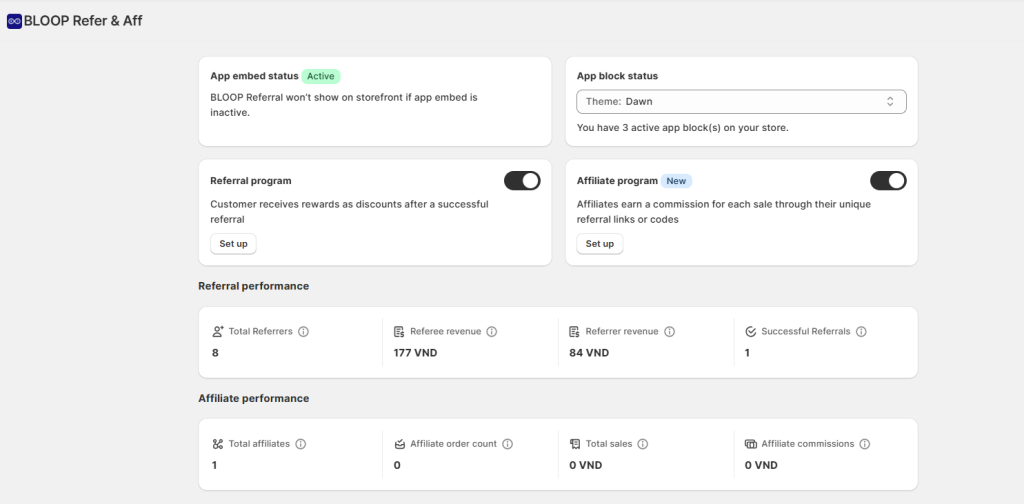
FAQs About Referral Incentives
What is a healthy referral participation rate in the first month?
Most successful programs see participation rates between 5-15% of customers in the first month. Focus on promoting the program through multiple touchpoints rather than expecting immediate viral growth, since building awareness takes time.
How many tiers are too many in a referral program?
Three to four tiers work best as they provide clear progression without overwhelming participants. More tiers create confusion while fewer tiers limit motivation for customers who quickly reach the top level.
Can I switch incentive types after launch without hurting trust?
Yes, you can change incentives but communicate changes transparently and honor existing commitments. Consider grandfathering current participants or offering upgrade paths that let them choose between old and new reward structures.
Do referral incentives impact organic word of mouth in the long run?
Well-designed incentives actually increase organic sharing by creating positive experiences. The key is ensuring rewards feel generous rather than manipulative, so customers share because they genuinely want to help friends discover your brand.
Scale Word Of Mouth Faster With Bloop
Referral programs with the right incentive structure deliver customer acquisition costs 50-70% lower than paid advertising while generating more loyal customers. Implementing proven strategies doesn’t require complex technical work when you use referral plugins purpose-built for Shopify merchants.
Bloop makes it simple to test different incentive structures, track performance metrics, and optimize your program based on real data. Built specifically for Shopify with seamless integration, fraud protection, and automated reward fulfillment, Bloop helps you launch and scale referral marketing without complexity or high costs. Get started free to turn your customers into your most effective marketing channel.